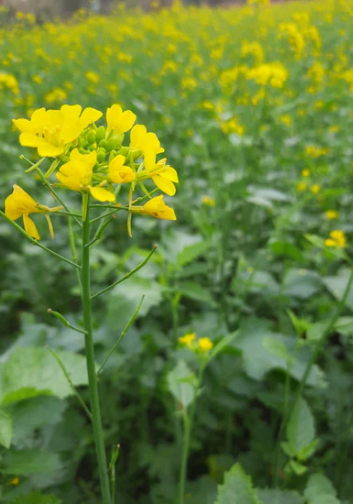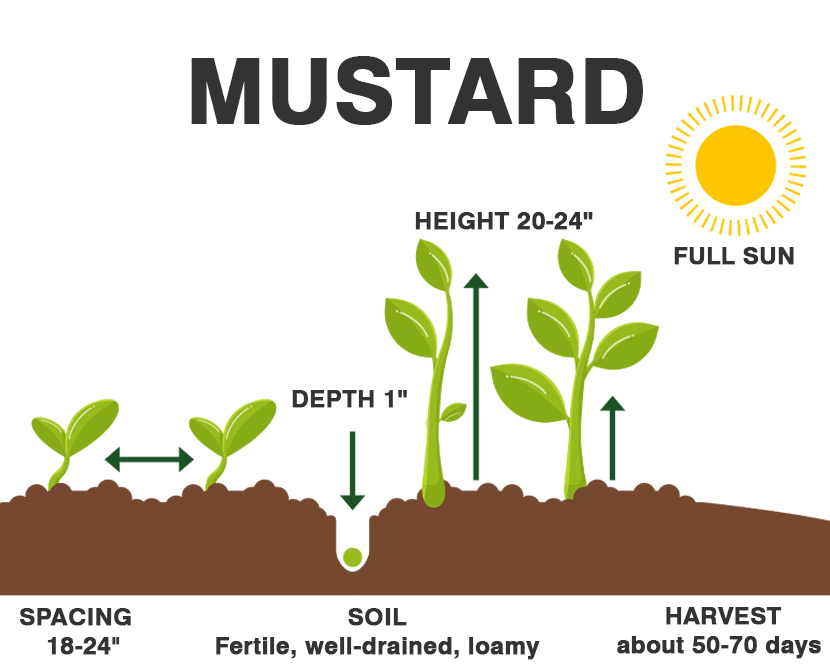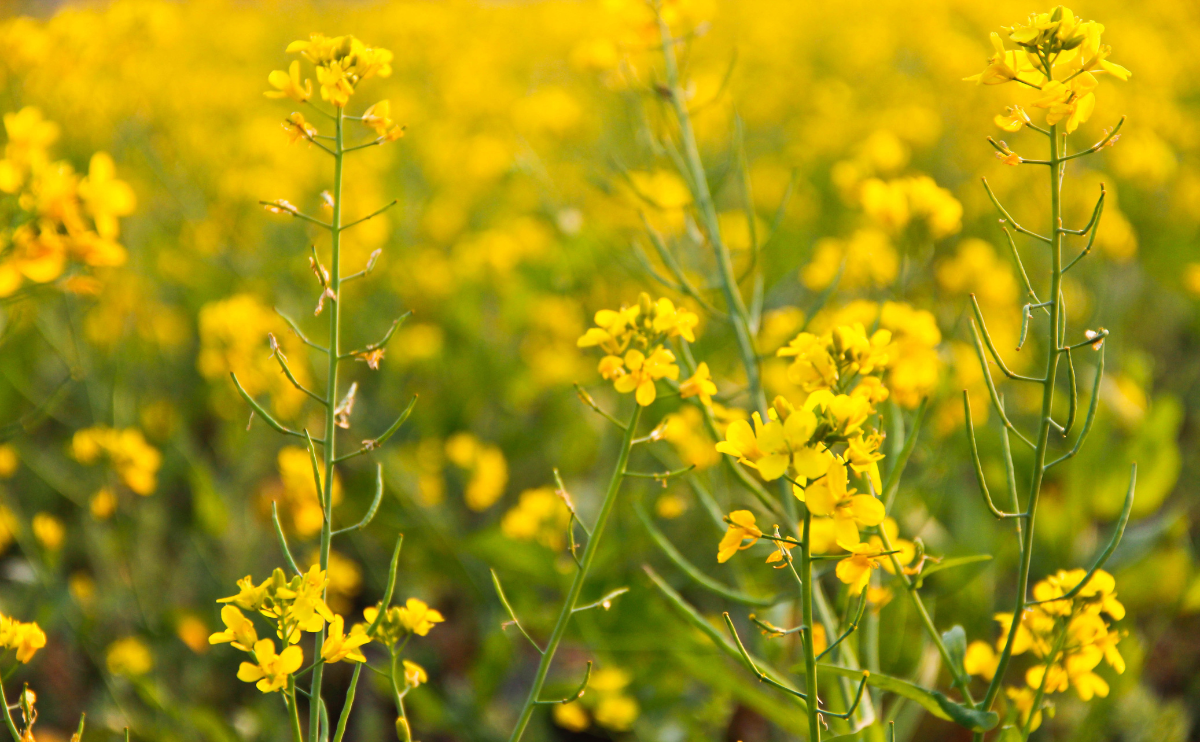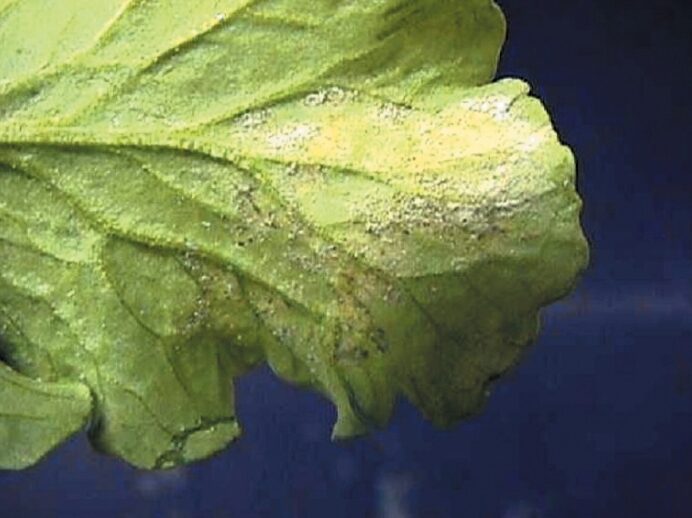Mustard (Brassica nigra) is one of the oldest and most useful spices and herbs known. Its young leaves are used as salad greens, its mature leaves are eaten boiled or sauteed, and its seeds are the source for the tart condiment that bears its name. This beautiful herb native to North Africa and Eurasia is so loved that it has spread worldwide. Both commercial and residential growers have planted it widely, leading to its introduction into local ecosystems.
Mustard is very easy to grow and will thrive in almost any soil condition. It also reseeds readily which results in rapid spread and this has allowed the plant to naturalize almost everywhere it has been introduced. A consequence of rapid spread has led some areas to label mustard as invasive. Adding to the problem is the allelopathic tendencies of the mustard plant which inhibits the growth of native flora.
Mustard is beautiful, delicious, nutritious, and actually very good for the soil it is planted in when its controlled. If you decide to include mustard in your garden, be prepared take necessary steps to prevent the plant’s spread into the local ecosystem.

| Botanical Name | Brassica nigra |
| Common Name | Mustard |
| Plant Type | Herb, Annual |
| Mature Size | 2 to 8 ft. tall |
| Sun Exposure | Full sun |
| Soil Type | Rich, Moist Loams, |
| Soil pH | Neutral |
| Bloom Time | March to June |
| Flower Color | Bright Yellow |
| Hardiness Zones | USDA zones 4-7 |
| Native Area | North Africa, Eurasia |

When to Plant?
This will be determined by your planting zone. There is a final frost date for each area. As a result, you can plan your gardening activities around this date. Check our Frost Dates Across North America: First & Last Frost Dates Chart. However, the date will not be the same for every plant.
How to Plant
You can start planting mustard outdoors three weeks before your last frost date. If you would like a more steady harvest, plant mustard green seeds about every three weeks to give you a successive harvest. Mustard greens will not grow well in the summer, so you should stop planting seeds a bit before the end of spring and start planting the mustard greens seeds again in midsummer for a fall harvest.
When planting mustard greens seeds, plant each seed just under the soil about a half-inch (1 cm.) apart. After the seeds sprout, thin the seedlings to 3 inches (8 cm.) apart. If you’re planting seedlings, plant them 3 to 5 inches (8-13 cm.) apart beginning three weeks before your last frost date. When planting mustard greens seeds, you can plant new seedlings every three weeks for a successive harvest.

Mustard greens related to kale, cabbage, and collard greens, they are the peppery leafy greens of the mustard plant and are used frequently in Chinese, Japanese, and Indian cooking.
Mustard greens suffer when attacked by insects, and this tender green attracts a number of pests, including cabbage worms, flea beetles, and aphids. Including mint in your garden near mustard greens repels cabbage worms. Companions – tansy, yarrow, flowering buckwheat, dill, and fennel attract insects such as ladybugs and lacewings that feed on aphids.
How to Cultivate
Soil – It prefers moist, well-drained soil but can grow in clay.
Sun – Full sun
Spacing – 18-24″
Water – Moist to dry (it’s adaptable)
Let the soil dry out completely before watering.
Fertilizer – This plant has no special fertilizing needs
How to Harvest
The mustard plants will eventually flower and go to seed. The flowers of mustard seed plants are generally yellow, but some varieties have white flowers. As the mustard flower grows and matures, it will form pods. Watch for these pods to start to turn brown.
Another sign that you are nearing harvest time will be that the leaves of the plant will start to yellow. Be careful not to leave the pods on the mustard seed plant for too long, as they will burst open when fully ripe and the mustard seed harvest will be lost.
The next step in harvesting mustard seeds is to remove the seeds from the pods. You can do this with your hands, or you can place the flower heads in a paper bag and allow them to finish maturing. The pods will open on their own in one to two weeks, and a gentle shake of the bag will shake loose most of the mustard seeds.
Hydroponics
Germination: You can start by germinating mustard seeds in a paper towel or directly in the growing medium of your hydroponic system. To ensure successful germination, keep the seeds moist but not waterlogged and at a temperature of around 20-25°C (68-77°F).
pH range: The pH range for mustard hydroponics should be between 5.5-6.5. It is essential to monitor the pH regularly using a pH meter or pH test strips and adjust it if necessary using pH up or pH down solutions.
EC (Electrical Conductivity): The ideal EC range for mustard hydroponics is between 1.5-2.5 mS/cm. It is essential to monitor the EC levels of the nutrient solution regularly using an EC meter and adjust it if necessary.
PPM (Parts Per Million): The recommended PPM range for mustard hydroponics is between 700-1400 ppm. It is essential to monitor the PPM levels of the nutrient solution regularly using a TDS meter and adjust it if necessary.
Humidity: Mustard prefers a humidity level of around 40-60%. You can use a humidifier or a dehumidifier to maintain the desired humidity level in your growing area.
Light hours: Mustard requires around 12-16 hours of light per day for optimal growth. You can use grow lights such as LED, HID or fluorescent lights to provide the necessary light for your plants.
Temperature air: Mustard grows best in a temperature range of 18-25°C (65-77°F). Ensure that your growing area is well-ventilated and the temperature is consistent.
Temperature water: The water temperature for mustard hydroponics is between 18-22°C (64-72°F). You can use a water heater or chiller to maintain the desired water temperature in your hydroponic system.
With these guidelines in mind, you should be well on your way to successfully growing mustard hydroponically. Good luck!



